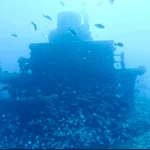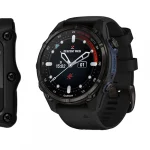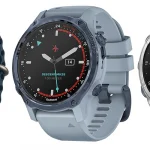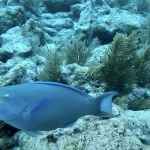Understanding the Vandenberg: Key Historical Insights
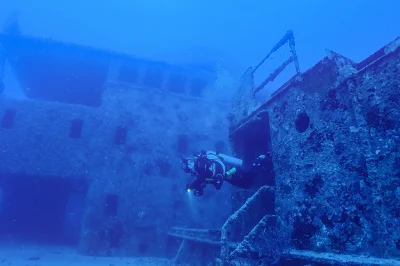
Table of Contents
- Understanding the Vandenberg: Key Historical Insights
- Exploring the Vandenberg’s Structure and Depths
- Must-See Features and Marine Life
- How to Prepare for Your Dive
- Myth-Busting Scuba: What Really Happens Below
- The Impact of Current Trends on Vandenberg Diving
- Navigating Missteps: Common Diving Errors on the Vandenberg
- Comparing Key West Dive Attractions
Introduction
Dive into Key West’s most exhilarating underwater adventure—the Vandenberg Wreck. This comprehensive guide equips you with detailed tips, historical insights, and best practices to ensure your dive is both exhilarating and safe. Whether you are an advanced diver or planning a guided tour, this post covers all you need to know about exploring the majestic depths of the Vandenberg, the second-largest artificial reef in the world.
Understanding the Vandenberg: Key Historical Insights
The Vandenberg wreck, located approximately six miles southeast of Key West, Florida, stands as a monumental artificial reef measuring 520 feet in length, making it one of the most significant dive sites in the world. Its impressive structure not only supports diverse marine life but also offers captivating dive experiences for enthusiasts at varying skill levels. Below is a detailed layout of its exciting features, organised by depth and accessibility.
Structural Features
- Superstructure Highlights:
- Kingpost: Featuring a prominent U.S. flag, this structure serves as an excellent orientation point and a picturesque photo opportunity.
- Crow’s Nest: An elevated platform adorned with antenna mounts, providing breathtaking views over the marine landscape.
- Radar Dishes: These iconic missile-tracking antennae, originally mounted atop support towers, are now secured to decks at depths of 65 to 75 feet, creating unique photo spots.
- Bridge & Communications Rooms: Accessible to advanced divers, these compartments contain antennas and provide an intriguing glimpse into the ship’s operations.
- Large-Scale Elements:
- Aft Balloon Hangar: A spacious area that can be accessed from the main deck, offering opportunities for exploration.
- Upper Decks: These structures rise to around 47 feet below the surface, featuring open pathways designed for easy navigation by divers.
Depth Zones & Accessibility
- Shallower Structures: Depths range from 40 to 47 feet, suitable for Open Water certified divers.
- Superstructure: Ranging from 50 to 75 feet, these sections are best suited for intermediate divers.
- Main Deck & Hull: Positioned at depths of 100 to 140 feet, these areas are designed for advanced divers due to their depth and potential currents.
Key features include the bridge’s top at 50 feet and the aft radar dish located at 75 feet. The main deck, sitting at 100 feet, and the hull down to 140 feet challenge advanced divers, while the upright positioning of the wreck on a sandy bottom facilitates navigation.
Marine Life & Legacy
The Vandenberg has become a vibrant habitat for numerous marine species, contributing to its popularity among divers. Recognised as the #1 wreck dive globally by Scuba Diving Magazine, it is an attractive destination for divers of all levels, from beginners exploring the top structures to advanced divers venturing into the deeper sections.
Exploring the Vandenberg’s Structure and Depths
Must-See Features and Marine Life
The USS Vandenberg, a 522-foot former military missile-tracking ship sunk in May 2009, serves as a vibrant artificial reef within the Florida Keys National Marine Sanctuary. Its structure and the surrounding marine life create a spectacular diving environment, making it one of the premier dive sites in Key West.
Key Features
- Structural Diversity: The wreck features a network of corridors, spacious open sections, and towering hull segments, which together create essential habitats for marine organisms. Iconic elements such as radar dishes, now draped with colourful coral, offer unique photo opportunities for divers.
- Depth Range: The Vandenberg’s depths vary from 40 to 140 feet, accommodating both recreational and technical divers. This range provides options for different skill levels and ensures that divers can explore its intricate layout safely.
Marine Life Encounters
- Reef Fish: Divers frequently encounter vibrant reef fish such as parrotfish, yellow tangs, blue tangs, and barracuda inhabiting the structure. These species are commonly seen swimming among the wreckage, creating a lively underwater landscape.
- Pelagic Hunters: The wreck attracts pelagic fish like dorado, which use the area as a feeding ground. These species hunt small fish and invertebrates, providing a thrilling sight for divers aiming to observe predatory behaviour.
- Schooling Fish: Large schools of fish converge around the hull, utilising the wreck’s structure for shelter and protection. This dynamic environment allows divers to experience impressive underwater scenes.
- Coral Growth: Over the years, various coral species and marine plants have established themselves on the wreck, supporting a diverse array of invertebrates and forming microhabitats.
The Vandenberg was deliberately sunk to alleviate pressure on natural reefs, enhance marine biodiversity, and create a living laboratory for ecological research. Its sheer size and complexity make it one of the world’s most notable artificial reefs, drawing divers from across the globe eager to explore its underwater marvels.
Must-See Features and Marine Life
To prepare for diving the Vandenberg wreck in Key West, focus on certification, recent experience, gear, and physical readiness.
Certification & Experience Requirements
- Advanced Open Water Diver Certification: Mandatory for accessing depths exceeding 100 feet.
- Deep Dive Within 12 Months: A recent dive to 60+ feet is required; operators may redirect unqualified divers to shallower wrecks.
- Nitrox Certification: Recommended for extended dive times, as the main deck sits at approximately 108 feet.
Pre-Dive Preparation
Physical Conditioning
- Hydrate: Avoid alcohol and heavy meals pre-dive.
- Stay Active: Build stamina for managing currents or swimming through wreckage.
Dive Planning
- Depth Awareness: The Vandenberg’s lowest sections reach around 165 feet, but most dives occur at 100–105 feet. Plan dives within certification limits.
- Guided Options: Required for Open Water divers or those lacking recent deep-diving experience.
Essential Gear & Checklist
| Item | Purpose |
|---|---|
| Certification Card + ID: | Proof of qualifications |
| Dive Light: | Illuminate low-visibility areas |
| Dry Bag: | Protect electronics during transit |
| Reef-Safe Sunscreen: | Avoid harming marine life |
| Towel/Spare Shirt: | Stay dry post-dive |
Gear packages (tanks, weights, BCD, regulator) are often provided by operators.
Post-Booking Steps
- Confirm Logistics: Check-in time, departure location (typically Front Street), and boat amenities (showers, rinse bins).
- Review Briefings: Pay attention to the traverse line system connecting the mooring line to the wreck.
- Buddy Up: Pair with an experienced diver, as solo diving is discouraged.
Operators like Captain Hook’s provide complimentary divemasters to assist novice divers. For optimal safety and enjoyment, combine certification preparation with recent deep dives and operator guidance.
How to Prepare for Your Dive
Myth-Busting Common Misconceptions About Scuba Diving Deep Wrecks
Diving deep wrecks like the Vandenberg can be a thrilling experience, but many misconceptions can lead to misunderstandings about the realities of such dives. Addressing these myths can enhance both safety and enjoyment for divers.
- Myth: Deep wrecks are necessary to see interesting marine life.
Reality: Most marine life flourishes in shallow coastal waters, typically at depths between 10–15 meters (35–50 feet). While deep wrecks may harbour specific species adapted to unique environments, they do not inherently offer a richer marine biodiversity compared to shallower dives. In fact, the vibrancy of marine ecosystems is often found at these more accessible depths, making them ideal for divers seeking lively underwater experiences.
- Myth: Deep wreck diving is inherently dangerous.
Reality: Although diving at greater depths introduces certain physiological risks, such as decompression sickness and gas toxicity, these dangers can be significantly mitigated through proper training and safety protocols. Scuba diving, when conducted responsibly, is statistically safer than many popular recreational activities, showing that with appropriate precautions, divers can explore deep wrecks safely.
- Myth: You need to be exceptionally fit to dive deep wrecks.
Reality: Contrary to popular belief, basic swimming skills and moderate physical health are sufficient for diving. Most diver training programmes focus on essential skills such as buoyancy control and emergency response rather than fitness level. Age or physical limitations should not discourage individuals from participating; what truly matters is being prepared and knowledgeable about diving techniques.
- Myth: Special gases or “oxygen tanks” are required for deep dives.
Reality: The majority of recreational divers utilise compressed surface air (which contains 21% oxygen), not pure oxygen. The term “oxygen tank” is a common misunderstanding. Specialised gases are typically reserved for technical diving scenarios, which require specific training and equipment. Regular scuba gear suffices for most deep wreck dives.
- Myth: Deep wreck diving is only suitable for experienced divers.
Reality: While deep wrecks pose unique challenges, recreational divers with Advanced Open Water training can typically participate safely. The focus should be on proper planning, including awareness of depth-specific risks like reduced visibility and strong currents, ensuring all divers are ready for the adventure.
Key considerations for diving deep wrecks include understanding the local marine life, appreciating the historical significance of the wrecks, and adhering to safety practices such as maintaining no-decompression limits and performing safety stops. By debunking these myths, divers can approach deep wrecks like the Vandenberg with the knowledge needed for a safe and memorable experience.
Myth-Busting Scuba: What Really Happens Below
The Vandenberg wreck, located just six miles southeast of Key West at depths ranging from 47 to 140 feet, exemplifies evolving trends in scuba gear and diving practices. Contemporary scuba diving emphasises technical specialisation, safety redundancy, and adaptive equipment strategies to navigate the complexities of this underwater marvel.
Safety and Technological Integration
Modern trends prioritise the use of redundant dive computer systems among technical divers tackling the challenges posed by the Vandenberg’s deep and structurally complex environment. These systems significantly enhance safety by providing essential data for depth, gas management, and timing, which is critical in such intricate underwater settings. Divers exploring the main deck, located at 100 feet, and the rising superstructure utilise computers that support redundant platforms, prepared for sudden ascents or the complexities of gas management in confined spaces.
This shift reflects a broader industry movement towards better safety protocols, including advanced gas planning tools and backup air sources, all designed to enhance diver safety during exploration.
Gear Specialisation for Diver Skill Levels
The Vandenberg’s depth profile necessitates tailored equipment strategies based on diver experience:
- Advanced Divers: Those delving into the deeper structures, such as the main deck and bridge compartments, utilise technical-specific gear. This includes redundant computers, multiple gas supplies, and specialised buoyancy control devices.
- Open-Water Divers: These divers access the shallower areas of the superstructure, which are around 47 feet, utilising more standard gear. This approach simplifies navigation and buoyancy control, making the wreck accessible to divers with varying skill levels.
Logistical and Ecological Influences
The dynamic waters surrounding the Vandenberg introduce logistical challenges that necessitate adaptive gear. Strong currents in the Florida Keys require divers to select equipment capable of handling diverse conditions effectively. Additionally, a growing emphasis on low-impact diving practices has inspired innovations in gear aimed at reducing environmental contact, particularly in coral-rich areas.
Certification and Skill Development
The challenges posed by the Vandenberg also underscore the importance of obtaining specialised certifications. Courses focused on advanced open water and technical diving are increasingly essential, with training programmes highlighting gear proficiency essential for managing complex dives and navigating challenging terrains.
Overall, the trends observed at the Vandenberg wreck are shaping scuba diving practices, enhancing safety through technology while also promoting environmental stewardship among divers.
The Impact of Current Trends on Vandenberg Diving
Common Mistakes Made by Divers on the Vandenberg Wreck
Diving the Vandenberg wreck in Key West presents unique challenges that can lead to critical mistakes, especially given the current wreck’s environment and structure. Understanding these common errors can enhance safety and enjoyment for divers at this remarkable site.
Inadequate Certification and Training
One significant mistake divers make is exceeding their certification levels. The main deck of the Vandenberg lies at approximately 100–105 feet, while the hull descends to around 165 feet. This depth necessitates at least an Advanced Open Water or Deep Specialty certification to mitigate risks associated with deeper dives. Moreover, some divers engage in penetration dives without proper wreck diving courses, increasing risks of getting lost inside the structure.
Underestimating Environmental Challenges
The Vandenberg is located on a hard, barren bottom that is prone to silt disruption. This lack of natural landmarks can complicate buoyancy control and navigation. Additionally, changes resulting from Hurricane Irma may have shifted debris, creating conditions that even seasoned divers might not expect, leading to unstable structures and unforeseen hazards.
Oversights in Safety Protocols
- Penetration risks: Divers may enter the wreck without proper lighting, safety equipment, or guides, increasing the difficulty of a potential rescue.
- Lack of redundant systems: Neglecting to carry dual dive computers or backup tools can heighten risks during complex dives.
Psychological Factors
Even experienced divers can underestimate the complexity of the Vandenberg, often due to overconfidence from backgrounds in cave diving. The wreck’s impressive size—over 500 feet long—can overwhelm divers, leading to navigational errors or separation from their dive group.
Post-Storm Hazards
Diving after storms demands extra caution. The changing landscape of the wreck due to shifted debris can complicate exit routes. Divers should remain vigilant and prepared for unexpected underwater topography changes as well.
For a safer diving experience, divers should prioritise proper certification, ensure the use of redundant safety gear, and consider guided tours conducted by reputable operators to minimise risks while exploring this magnificent wreck.
Navigating Missteps: Common Diving Errors on the Vandenberg
Key Features of the Vandenberg Wreck
The USS Vandenberg is Key West’s premier wreck dive, recognised as the second-largest artificial reef globally and a top-rated dive site. The wreck’s massive size and intriguing structure make it a draw for divers of various skill levels, though it is generally recommended for advanced divers. Here’s a comparative overview of the Vandenberg and other local dive attractions:
- Depth: The Vandenberg sits between 100 and 165 feet, with the main deck at approximately 100 feet. Other Key West dive sites, like coral reefs, typically range from 20 to 80 feet.
- Diver Level: This wreck is suited for advanced divers, particularly those looking to explore its superstructure, while many other sites cater to a broader range of skills.
- Key Attractions: Unique features of the Vandenberg include its radar dishes, bridge compartments, and numerous swim-throughs, while other dive sites may focus more on coral reefs or smaller wrecks like Alexander’s Wreck.
- Marine Life: Divers can expect to see diverse marine species, including tarpon, Goliath grouper, barracudas, and moray eels. Shallower dive sites generally host different types of marine life and may vary in biodiversity.
Dive Experience
The Vandenberg’s 522-foot-long structure is sunk upright on a sandy bottom, offering complex swim-throughs and accessibility to its superstructure for Open Water divers. However, be prepared for strong currents that can require advanced skills in deeper sections. It is advisable to conduct morning dives for calmer waters and improved visibility, enhancing the overall diving experience.
Historical and Ecological Significance
Sunk intentionally in 2009, the Vandenberg hosts over 1,000 compartments and hundreds of marine species, contributing to its recognition as the #1 wreck dive in several reader polls. Although some divers perceive it as less biodiverse than other Florida wrecks, like the Duane or Spiegel Grove, its sheer scale and historical importance make it a bucket-list destination for scuba enthusiasts.
Key Considerations
- Certifications: An Advanced Open Water certification or higher is recommended for divers wanting to explore the wreck thoroughly.
- Guided Tours: Operators such as Captain’s Locker and Lost Reef Adventures offer tailored experiences, ensuring safety and maximising enjoyment through careful dive planning.
For divers prioritising scale, historical depth, and challenges, the Vandenberg is a standout attraction that generally surpasses most alternatives in Key West.
Comparing Key West Dive Attractions
Key Tips for Diving the Vandenberg Wreck in Key West
The Vandenberg wreck is one of the largest artificial reefs in the world, but diving it requires careful preparation and knowledge. Here are vital tips to enhance your dive experience and ensure safety on this impressive underwater site.
Certification & Experience
- Advanced Open Water Certification Required: Diving the Vandenberg is classified as an advanced dive due to depths reaching 145 feet (about 100 feet to the deck) and necessitates divers to have recent down-dive experience (within 12 months).
- Open Water Certified Divers Allowed: Divers aged 15 and older who have actively dived within the past year can explore shallower areas of the wreck with a guide, mainly around the superstructure (47 feet).
Guided Exploration
- Hire an Experienced Guide: Navigating the massive structure (over 520 feet in length) and potential penetrations are safer with a knowledgeable guide. Multiple dives are often needed to fully explore the wreck.
- Nitrox for Extended Bottom Time: Utilising Nitrox can greatly enhance time at depth, helping divers to effectively manage air consumption due to the wreck’s scale.
Technical & Safety Considerations
- Current Awareness: Dive conditions may vary from calm to strong currents. Always check weather reports and listen to dive operator briefings for safe diving.
- Layer Properly: Water temperatures can be cooler than expected, especially deeper down. Using gloves during dives is also recommended to protect your hands.
Site-Specific Insights
- Marine Life & Wreck Features:
- Upper decks (47-100 feet) feature radar dishes and the bridge to explore.
- Main deck (100-145 feet) access is restricted to advanced divers, making penetrations necessary for tight compartments.
- Avoiding Penetration Mistakes: Always adhere to your guide’s instructions for safe entry and exit in passageways of the wreck.
Logistics
- Multiple Dives: Given the wreck’s complexity, planning for repeated visits is advisable. Dive operators like Southpoint Divers and Captain Hook’s provide guided trips.
- Visibility & Conditions: The water temperature typically hovers around 80°F with visibility often exceeding 20 feet on calm days, but it is crucial to confirm current forecasts prior to diving.
Post-Dive Considerations
- Debrief & Safety Stops: Incorporating Nitrox reduces decompression risks. Always plan gradual ascents with necessary safety stops to ensure a safe return to the surface.
Diving the Vandenberg is a blend of technical challenge and unique historical significance, making it an essential experience for serious scuba diving enthusiasts.
Sources
- Scuba Diving – Diving the Vandenberg Wreck
- First Church of the Masochist – Diving Vandenberg
- Key West – Vandenberg Overview
- Florida Keys – USS Vandenberg
- KeyWest.com – About the Vandenberg
- SSI – Dive Site: Vandenberg
- Captain Hook’s – Key West Vandenberg Wreck Dive Trip
- Florida Scuba Diving – Maximum Depth of the Vandenberg Wreck

